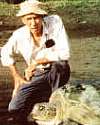
Born 16 Jun 1909; died 21 May 1987 at age 77.
American biologist who was recognized as the foremost authority on turtles. He was most noted for his pioneering work in studying sea turtles. He classified 79 species and subspecies of turtles. Extensive work at Tortuguero and Ascension Island earned him the title of "Turtle Man." His work also dispelled the myths and folklore about turtles. From his extensive studies of migratory, nesting, mating, and nutritional habits of turtles he was able to locate the optimal areas for turtles to live and breed. His consistent effort for the conservation of turtles helped to increase their population throughout the world. Carr invented the "five dollar tag" to tag turtles. He published several hundred articles and for the Time Life Books series on natural history of Africa.
American biologist who was recognized as the foremost authority on turtles. He was most noted for his pioneering work in studying sea turtles. He classified 79 species and subspecies of turtles. Extensive work at Tortuguero and Ascension Island earned him the title of "Turtle Man." His work also dispelled the myths and folklore about turtles. From his extensive studies of migratory, nesting, mating, and nutritional habits of turtles he was able to locate the optimal areas for turtles to live and breed. His consistent effort for the conservation of turtles helped to increase their population throughout the world. Carr invented the "five dollar tag" to tag turtles. He published several hundred articles and for the Time Life Books series on natural history of Africa.
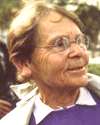
Born 16 Jun 1902; died 3 Sep 1992 at age 90. quotes
American scientist regarded as one of the most important figures in the history of genetics. In the 1940s and 1950s McClintock's work on the cytogenetics of maize led her to theorize that genes are transposable - they can move around - on and between chromosomes. McClintock drew this inference by observing changing patterns of coloration in maize kernels over generations of controlled crosses. The idea that genes could move did not seem to fit with what was then known about genes, but improved molecular techniques of the late 1970s and early 1980s allowed other scientists to confirm her discovery. She was awarded the 1983 Nobel Prize in Physiology or Medicine, the first American woman to win an unshared Nobel Prize.
American scientist regarded as one of the most important figures in the history of genetics. In the 1940s and 1950s McClintock's work on the cytogenetics of maize led her to theorize that genes are transposable - they can move around - on and between chromosomes. McClintock drew this inference by observing changing patterns of coloration in maize kernels over generations of controlled crosses. The idea that genes could move did not seem to fit with what was then known about genes, but improved molecular techniques of the late 1970s and early 1980s allowed other scientists to confirm her discovery. She was awarded the 1983 Nobel Prize in Physiology or Medicine, the first American woman to win an unshared Nobel Prize.
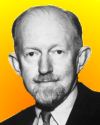
Born 16 Jun 1902; died 6 Oct 1984 at age 82. quotes
American paleontologist known for his contributions to evolutionary theory and to the understanding of intercontinental migrations of animal species in past geological times. Simpson specialized in early fossil mammals, leading expeditions on four continents and discovering in 1953 the 50-million-year old fossil skulls of dawn horses in Colorado. He helped develop the modern biological theory of evolution, drawing on paleontology, genetics, ecology, and natural selection to show that evolution occurs as a result of natural selection operating in response to shifting environmental conditions. He spent most of his career as a paleontologist at the American Museum of Natural History.
American paleontologist known for his contributions to evolutionary theory and to the understanding of intercontinental migrations of animal species in past geological times. Simpson specialized in early fossil mammals, leading expeditions on four continents and discovering in 1953 the 50-million-year old fossil skulls of dawn horses in Colorado. He helped develop the modern biological theory of evolution, drawing on paleontology, genetics, ecology, and natural selection to show that evolution occurs as a result of natural selection operating in response to shifting environmental conditions. He spent most of his career as a paleontologist at the American Museum of Natural History.
George Gaylord Simpson: Paleontologist and Evolutionist, by Leo F. Laporte. - book suggestion.
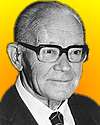
Born 16 Jun 1897; died 26 Aug 1987 at age 90.
German chemist whose studies of organic phosphorus compounds won him a share (with Herbert C. Brown) of the Nobel Prize for Chemistry in 1979. In 1953, he discovered how a family of organic compounds called ylides could form the basis of the Wittig reaction, which easily and predictably joins two carbon atoms from different molecules to form a double bond. The Wittig reaction's reliability enabled other chemists to pursue and publish findings on thousands of applications for linking large carbon molecules. The process was used for synthesizing complex compounds such as vitamin A, vitamin D derivatives, steroids, and biological pesticides. Because of the Wittig reaction, such compounds can now routinely be synthesized.
German chemist whose studies of organic phosphorus compounds won him a share (with Herbert C. Brown) of the Nobel Prize for Chemistry in 1979. In 1953, he discovered how a family of organic compounds called ylides could form the basis of the Wittig reaction, which easily and predictably joins two carbon atoms from different molecules to form a double bond. The Wittig reaction's reliability enabled other chemists to pursue and publish findings on thousands of applications for linking large carbon molecules. The process was used for synthesizing complex compounds such as vitamin A, vitamin D derivatives, steroids, and biological pesticides. Because of the Wittig reaction, such compounds can now routinely be synthesized.
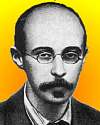
Born 16 Jun 1888; died 16 Sep 1925 at age 37.
Russian mathematician who was the first to work out a mathematical analysis of an expanding universe consistent with general relativity, yet without Einstein's cosmological constant. In 1922, he developed solutions to the field equations, one of which clearly described a universe that began from a point singularity, and expanded thereafter. In his article On the Curvature of Space received by the journal Zeitschrift für Physik on 29 Jun 1922, he showed that the radius of curvature of the universe can be either an increasing or a periodic function of time. In Jul 1925, he made a record-breaking 7400-m balloon ascent to make meteorological and medical observations. A few weeks later he fell ill and died of typhus.[Also spelled Aleksandr Aleksandrovich. Last name also seen as Friedman. For date of birth, see MacTutor for explanation of why 17 Jun or 29 Jun birthdate seen in various sources is due to a confusion between New Syle and Old Style dates. Birth date is 29 Jun 1888 Old Style.]
Russian mathematician who was the first to work out a mathematical analysis of an expanding universe consistent with general relativity, yet without Einstein's cosmological constant. In 1922, he developed solutions to the field equations, one of which clearly described a universe that began from a point singularity, and expanded thereafter. In his article On the Curvature of Space received by the journal Zeitschrift für Physik on 29 Jun 1922, he showed that the radius of curvature of the universe can be either an increasing or a periodic function of time. In Jul 1925, he made a record-breaking 7400-m balloon ascent to make meteorological and medical observations. A few weeks later he fell ill and died of typhus.[Also spelled Aleksandr Aleksandrovich. Last name also seen as Friedman. For date of birth, see MacTutor for explanation of why 17 Jun or 29 Jun birthdate seen in various sources is due to a confusion between New Syle and Old Style dates. Birth date is 29 Jun 1888 Old Style.]
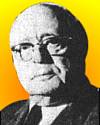
Born 16 Jun 1880; died 7 Dec 1963 at age 83.
Austrian-American chemist and historian. After obtaining a university degree in Vienna he emigrated to the U.S. (1901). He worked as a chemist with the American Linseed Co. In 1910, with Norman Copthorne, he developed a method of determining the presence of fish oils in vegetable oils, and the method was adopted by the U.S. Dept of Agriculture in 1925. Earlier, he had developed the first one-piece window envelope for the Window Envelope Company. Partly to supply the Window Envelope Company with a special varnish for its envelopes, Eisenschiml established the Scientific Oil Company (now Scientific Chemicals, Inc.) He also wrote over a dozen books on the Civil War; the best known is Why Was Lincoln Murdered? (1937).
Austrian-American chemist and historian. After obtaining a university degree in Vienna he emigrated to the U.S. (1901). He worked as a chemist with the American Linseed Co. In 1910, with Norman Copthorne, he developed a method of determining the presence of fish oils in vegetable oils, and the method was adopted by the U.S. Dept of Agriculture in 1925. Earlier, he had developed the first one-piece window envelope for the Window Envelope Company. Partly to supply the Window Envelope Company with a special varnish for its envelopes, Eisenschiml established the Scientific Oil Company (now Scientific Chemicals, Inc.) He also wrote over a dozen books on the Civil War; the best known is Why Was Lincoln Murdered? (1937).
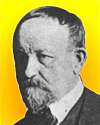
Born 16 Jun 1850; died 4 May 1919 at age 68. quotes
Max Emil Julius Delbrück was a German chemist who spent a forty-five year career leading development in the fermentation industry. He established a school for distillation workers, a glass factory for the manufacture of reliable apparatus and instruments, and an experimental distillery. Giving attention to the raw resources, he founded teaching and experimental institutions to improve cultivation of potatoes and hops. He researched physiology of yeast and application in the process of fermentation, production of pure cultures, and the action of enzymes. He started the journals Zeitschrift fur Spiritus-Industrie (1867) and Wochenschrift für Brauerei, for the alcohol and brewery industries, which he co-edited. His nephew, also named Max Delbrück, became a microbiologist who won the Nobel Prize in Physiology or Medicine in 1969.«
Max Emil Julius Delbrück was a German chemist who spent a forty-five year career leading development in the fermentation industry. He established a school for distillation workers, a glass factory for the manufacture of reliable apparatus and instruments, and an experimental distillery. Giving attention to the raw resources, he founded teaching and experimental institutions to improve cultivation of potatoes and hops. He researched physiology of yeast and application in the process of fermentation, production of pure cultures, and the action of enzymes. He started the journals Zeitschrift fur Spiritus-Industrie (1867) and Wochenschrift für Brauerei, for the alcohol and brewery industries, which he co-edited. His nephew, also named Max Delbrück, became a microbiologist who won the Nobel Prize in Physiology or Medicine in 1969.«
Born 16 Jun 1806; died 26 Jan 1885 at age 78.
English physician, chemist and inventor of an electromagnetic repeater for relaying telegraphic signals (1836) and an electrochemical telegraph (1838). He turned his interest to telegraphy after studying medicine and beginning a career as a chemist. He emigrated to Adelaide, South Australia, where he was a farmer and physician.
English physician, chemist and inventor of an electromagnetic repeater for relaying telegraphic signals (1836) and an electrochemical telegraph (1838). He turned his interest to telegraphy after studying medicine and beginning a career as a chemist. He emigrated to Adelaide, South Australia, where he was a farmer and physician.
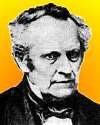
Born 16 Jun 1801; died 22 May 1868 at age 66. quotes
German mathematician and physicist whose work suggested the far-reaching principle of duality, which states the equivalence of certain related types of theorems. He also discovered that cathode rays (electron rays produced in a vacuum) are diverted from their path by a magnetic field, a principle vital to the development of modern electronic devices, such as television. At first alone and later with the German physicist Johann W. Hittorf, Plücker made many important discoveries in spectroscopy. Before Bunsen and Kirchhoff, he announced that spectral lines were characteristic for each chemical substance and this had value to chemical analysis. In 1862 he pointed out that the same element may exhibit different spectra at different temperatures.
German mathematician and physicist whose work suggested the far-reaching principle of duality, which states the equivalence of certain related types of theorems. He also discovered that cathode rays (electron rays produced in a vacuum) are diverted from their path by a magnetic field, a principle vital to the development of modern electronic devices, such as television. At first alone and later with the German physicist Johann W. Hittorf, Plücker made many important discoveries in spectroscopy. Before Bunsen and Kirchhoff, he announced that spectral lines were characteristic for each chemical substance and this had value to chemical analysis. In 1862 he pointed out that the same element may exhibit different spectra at different temperatures.
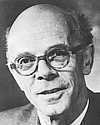
Died 16 Jun 1984 at age 79 (born 23 Mar 1905). quotes
English physicist whose critical improvements to the cavity magnetron, the microwave-generating device used in radar, was a major contribution to winning WWII. A magnetron is now commonplace in homes inside the microwave oven. Earlier magnetrons made in the 1920s gave low power output. By Feb 1940, development by Randall with Harry Boot of the small-sized cavity magnetron which generated centimeter wavelengths at much higher power allowed radar to detect smaller objects. In turn, this more compact equipment with a smaller antenna permitted easy mobile installation of high-resolution radar in aircraft. After the war, Randall turned to biophysics, including directing experimental work on DNA structure.«
English physicist whose critical improvements to the cavity magnetron, the microwave-generating device used in radar, was a major contribution to winning WWII. A magnetron is now commonplace in homes inside the microwave oven. Earlier magnetrons made in the 1920s gave low power output. By Feb 1940, development by Randall with Harry Boot of the small-sized cavity magnetron which generated centimeter wavelengths at much higher power allowed radar to detect smaller objects. In turn, this more compact equipment with a smaller antenna permitted easy mobile installation of high-resolution radar in aircraft. After the war, Randall turned to biophysics, including directing experimental work on DNA structure.«
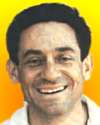
Died 16 Jun 1981 at age 64 (born 1 Jan 1917).
American meteorologist who, working with John von Neumann, first applied the electronic computer for weather prediction (1950) and brought about a new understanding of the large-scale flow circulation within the atmosphere. The entire Oct 1947 issue of the Journal of Meteorology published his Ph.D. dissertation (UCLA, 1936) Dynamics of long waves in a baroclinic westerly current. He emphasized the influence of “long waves” in the upper atmosphere rather than the existing practice of emphasis on the polar front. He also simplified analysis of perturbations of these waves using mathematically rigorous methods that yielded useful physical interpretation. He helped the U.S. Weather Bureau set up (1954) a numerical weather prediction unit.«
American meteorologist who, working with John von Neumann, first applied the electronic computer for weather prediction (1950) and brought about a new understanding of the large-scale flow circulation within the atmosphere. The entire Oct 1947 issue of the Journal of Meteorology published his Ph.D. dissertation (UCLA, 1936) Dynamics of long waves in a baroclinic westerly current. He emphasized the influence of “long waves” in the upper atmosphere rather than the existing practice of emphasis on the polar front. He also simplified analysis of perturbations of these waves using mathematically rigorous methods that yielded useful physical interpretation. He helped the U.S. Weather Bureau set up (1954) a numerical weather prediction unit.«
The Atmosphere a Challenge: The Science of Jule Gregory Charney, by Richard S. Lindzen. - book suggestion.
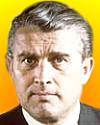
Died 16 Jun 1977 at age 65 (born 23 Mar 1912). quotes
Wernher Magnus Maximilian von Braun was a German-American rocket engineer who was one of the most important developers of rockets and their evolution to applications in space exploration. His interest began as a teenager in Germany, and during WW II he led the development of the deadly V–2 ballistic missile for the Nazis (which role remains controversial). After war, he was taken to use his knowledge to produce rockets for the U.S. Army. In 1960, he transferred to the newly formed NASA and became director of Marshall Space Flight Center and chief architect of the Saturn V launch vehicle used to put men on the moon. His contributions include the Explorer satellites; Jupiter, Pershing, Redstone and Saturn rockets, and Skylab.«
Wernher Magnus Maximilian von Braun was a German-American rocket engineer who was one of the most important developers of rockets and their evolution to applications in space exploration. His interest began as a teenager in Germany, and during WW II he led the development of the deadly V–2 ballistic missile for the Nazis (which role remains controversial). After war, he was taken to use his knowledge to produce rockets for the U.S. Army. In 1960, he transferred to the newly formed NASA and became director of Marshall Space Flight Center and chief architect of the Saturn V launch vehicle used to put men on the moon. His contributions include the Explorer satellites; Jupiter, Pershing, Redstone and Saturn rockets, and Skylab.«
Dr. Space: The Life of Wernher von Braun, by Bob Ward. - book suggestion.
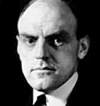
Died 16 Jun 1971 at age 81 (born 20 Jul 1889).
(1st Baron) John Charles Walsham Reith was the first Director-General (1927-38) of the BBC, the British Broadcasting Corporation. Although educated as a civil engineer, he became its founding father. He rejected the American model of unregulated, commercial radio in the 1920s and the fledgling Soviet Union's rigidly controlled state system. Instead, Reith's vision was of an independent British broadcaster able to educate, inform and entertain the whole nation. Newscasts and programming were zealously maintained free from political interference and commercial pressure. Under his direction, broadcasting technology was rapidly developed, program schedules were enlarged, and the BBC enriched the nation's intellectual and cultural life. The reputation for reliability thus gained by the BBC endured long after Reith left the corporation. Remembering his spirit, an annual series of Reith lectures are delivered by invited leading figures using the radio medium to advance greater public understanding of their field. The lecture series celebrated its 60th anniversary in 2008.«
(1st Baron) John Charles Walsham Reith was the first Director-General (1927-38) of the BBC, the British Broadcasting Corporation. Although educated as a civil engineer, he became its founding father. He rejected the American model of unregulated, commercial radio in the 1920s and the fledgling Soviet Union's rigidly controlled state system. Instead, Reith's vision was of an independent British broadcaster able to educate, inform and entertain the whole nation. Newscasts and programming were zealously maintained free from political interference and commercial pressure. Under his direction, broadcasting technology was rapidly developed, program schedules were enlarged, and the BBC enriched the nation's intellectual and cultural life. The reputation for reliability thus gained by the BBC endured long after Reith left the corporation. Remembering his spirit, an annual series of Reith lectures are delivered by invited leading figures using the radio medium to advance greater public understanding of their field. The lecture series celebrated its 60th anniversary in 2008.«
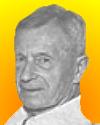
Died 16 Jun 1970 at age 82 (born 29 Jan 1888).
English mathematician and physicist noted for his research in geophysics. After graduation (1910) he worked at the Greenwich Observatory, but returned to Cambridge upon the outbreak of WW I. Between 1915 and 1917 he completed a series of important papers on thermal diffusion and the fundamentals of gas dynamics. He developed systematic approximations to the Maxwell-Boltzmann formulation for the velocity distribution function for interacting particles under general force laws. During WW II he worked on military operational research and incendiary bomb problems. Chapman's main area of research was geomagnetism, beginning in 1913 and extending to terrestrial and interplanetary magnetism, the ionosphere and the aurora borealis.
English mathematician and physicist noted for his research in geophysics. After graduation (1910) he worked at the Greenwich Observatory, but returned to Cambridge upon the outbreak of WW I. Between 1915 and 1917 he completed a series of important papers on thermal diffusion and the fundamentals of gas dynamics. He developed systematic approximations to the Maxwell-Boltzmann formulation for the velocity distribution function for interacting particles under general force laws. During WW II he worked on military operational research and incendiary bomb problems. Chapman's main area of research was geomagnetism, beginning in 1913 and extending to terrestrial and interplanetary magnetism, the ionosphere and the aurora borealis.
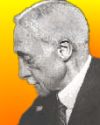
Died 16 Jun 1930 at age 69 (born 12 Oct 1860).
Elmer Ambrose Sperry was an American engineer and inventor who devised the gyrocompass. In the 1890's he made useful inventions in electric mining machinery, and patent electric brake and control system for street- or tramcars. In 1908, he patented the active gyrostabilizer which acted to stop a ship's roll as soon as it started. He patented the first gyrocompass designed expressly for the marine environment in 1910. This "spinning wheel" gyro was a significant improvement over the traditional magnetic compass of the day and changed the course of naval history. The first Sperry gyrocompass was tested at-sea aboard the USS Delaware in 1911 and established Sperry as a world leader in the manufacture of military gyrocompasses for the next 80 years.
Elmer Ambrose Sperry was an American engineer and inventor who devised the gyrocompass. In the 1890's he made useful inventions in electric mining machinery, and patent electric brake and control system for street- or tramcars. In 1908, he patented the active gyrostabilizer which acted to stop a ship's roll as soon as it started. He patented the first gyrocompass designed expressly for the marine environment in 1910. This "spinning wheel" gyro was a significant improvement over the traditional magnetic compass of the day and changed the course of naval history. The first Sperry gyrocompass was tested at-sea aboard the USS Delaware in 1911 and established Sperry as a world leader in the manufacture of military gyrocompasses for the next 80 years.
Elmer Sperry: Inventor and Engineer, by Thomas Parker Hughes. - book suggestion.
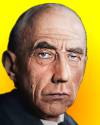
Died 16 Jun 1928 at age 55 (born 16 Jul 1872). quotes
Roald Engelbregt Gravning Amundsen was a Norwegian explorer who was one of the great polar explorers. In his twenties, he interrupted his studies in medicine to join the first winter Antarctic, sailing (1897) as first mate on the Belgica, a Belgian expedition. On his next voyage (1903-06) he established the Northwest Passage. In 1904 he located the site of the North Magnetic pole. When he turned his attention again to the Antarctic, he achieved his quest to be the first to reach the South Pole (14 Dec 1911). After three unsuccessful attempts, he was among the first to cross the Arctic by air in 1926, making a flight by dirigible from Spitsbergen, across the North Pole, to Alaska. He died in another flight over the Arctic (Jun 1928) during a search for survivors of a shipwreck.«
Roald Engelbregt Gravning Amundsen was a Norwegian explorer who was one of the great polar explorers. In his twenties, he interrupted his studies in medicine to join the first winter Antarctic, sailing (1897) as first mate on the Belgica, a Belgian expedition. On his next voyage (1903-06) he established the Northwest Passage. In 1904 he located the site of the North Magnetic pole. When he turned his attention again to the Antarctic, he achieved his quest to be the first to reach the South Pole (14 Dec 1911). After three unsuccessful attempts, he was among the first to cross the Arctic by air in 1926, making a flight by dirigible from Spitsbergen, across the North Pole, to Alaska. He died in another flight over the Arctic (Jun 1928) during a search for survivors of a shipwreck.«
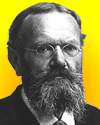
Died 16 Jun 1902 at age 60 (born 25 Nov 1841). quotes
Friedrich Wilhelm Karl Ernst Schröder was a German mathematician who was prominent for his studies in algebraic logic, ordered sets, lattice theory, and ordinal numbers. Schröder studied mathematics under Otto Hesse, physics under Gustav Kirchhoff and chemistry under Robert Bunsen at Heidelberg leading to a Ph.D. (1862). In the following years as a teacher, his positions included schools at Zürich, and at the Black Forest of Baden-Baden, allowed pursuits as an enthusiastic mountain climber and hiker. By 1874, he was a full professor, and from 1876 spent the rest of his career at the Technische Hochschule in Karlsruhe. Schröder’s original interest in mathematical physics led to investigating its foundations and a deeper involvement in logic.«
Friedrich Wilhelm Karl Ernst Schröder was a German mathematician who was prominent for his studies in algebraic logic, ordered sets, lattice theory, and ordinal numbers. Schröder studied mathematics under Otto Hesse, physics under Gustav Kirchhoff and chemistry under Robert Bunsen at Heidelberg leading to a Ph.D. (1862). In the following years as a teacher, his positions included schools at Zürich, and at the Black Forest of Baden-Baden, allowed pursuits as an enthusiastic mountain climber and hiker. By 1874, he was a full professor, and from 1876 spent the rest of his career at the Technische Hochschule in Karlsruhe. Schröder’s original interest in mathematical physics led to investigating its foundations and a deeper involvement in logic.«
Died 16 Jun 1881 at age 53 (born 14 Oct 1827).
British lawyer and anthropologist who undertook a vast comparative research of the ceremonies of marriage. His theory of social evolution, in which he first used the terms exogamy (marriage outside the group) and endogamy (marriage within the group), stemmed from his interest in the survival of primitive cultures. He did much to stimulate and guide anthropological research. He developed influential theories on cultural evolution, kinship and the origin of religion. McLennan's pioneering work on totems (as survivals of primitive worship of fetishes, plants, animals and anthropomorphic gods) had a great influence upon contemporary social scientists, including Sigmund Freud. McLennan was influenced strongly by Charles Darwin's theory of evolution.
British lawyer and anthropologist who undertook a vast comparative research of the ceremonies of marriage. His theory of social evolution, in which he first used the terms exogamy (marriage outside the group) and endogamy (marriage within the group), stemmed from his interest in the survival of primitive cultures. He did much to stimulate and guide anthropological research. He developed influential theories on cultural evolution, kinship and the origin of religion. McLennan's pioneering work on totems (as survivals of primitive worship of fetishes, plants, animals and anthropomorphic gods) had a great influence upon contemporary social scientists, including Sigmund Freud. McLennan was influenced strongly by Charles Darwin's theory of evolution.
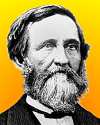
Died 16 Jun 1878 at age 62 (born 1 Nov 1815).
Crawford Williamson Long was an American physician who was the first in the U.S. to use ether as anesthetic in surgery. On 30 Mar 1842, practicing in rural Georgia, he first used ether anesthetic while he removed a tumour from a patient's neck. Although he operated more times with ether before 1846, he was apparently unaware of its full significance and did not publish a description of his procedure until 1849. By that time, W.T.G. Morton of Boston had filed a patent for discovery of ether in 1846 and Long would never get much credit or gain from claim to priority. In 1850, he moved to Athens, Georgia, acquiring a large practice and an apothecary shop. There he used ether in obstetrical cases and did much charitable work for the poor.
Crawford Williamson Long was an American physician who was the first in the U.S. to use ether as anesthetic in surgery. On 30 Mar 1842, practicing in rural Georgia, he first used ether anesthetic while he removed a tumour from a patient's neck. Although he operated more times with ether before 1846, he was apparently unaware of its full significance and did not publish a description of his procedure until 1849. By that time, W.T.G. Morton of Boston had filed a patent for discovery of ether in 1846 and Long would never get much credit or gain from claim to priority. In 1850, he moved to Athens, Georgia, acquiring a large practice and an apothecary shop. There he used ether in obstetrical cases and did much charitable work for the poor.
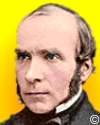
Died 16 Jun 1858 at age 45 (born 15 Mar 1813). quotes
English obstetrician, epidemiologist and public health reformer who was among the first to use anesthesia, renowned as a pioneer epidemiologist. In On the Mode of Communication of Cholera (1849), Snow suggested that cholera was a contagious disease easily transmitted by contaminated water. The widely-held theory was that diseases are caused by bad air and his idea was ignored. Then, in London's 1854 cholera emergency, he painstakingly correlated individual cholera casualties to the water supply they had used in each case. He thus solved the deadly epidemic by removing a pump handle of the community water pump that he found to be the culprit. Investigation showed raw sewage from a cesspit had contaminated the well.« more
English obstetrician, epidemiologist and public health reformer who was among the first to use anesthesia, renowned as a pioneer epidemiologist. In On the Mode of Communication of Cholera (1849), Snow suggested that cholera was a contagious disease easily transmitted by contaminated water. The widely-held theory was that diseases are caused by bad air and his idea was ignored. Then, in London's 1854 cholera emergency, he painstakingly correlated individual cholera casualties to the water supply they had used in each case. He thus solved the deadly epidemic by removing a pump handle of the community water pump that he found to be the culprit. Investigation showed raw sewage from a cesspit had contaminated the well.« more
Cholera, Chloroform and the Science of Medicine: A Life of John Snow, by Peter Vinten-Johansen. - book suggestion.
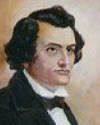
Died 16 Jun 1855 at age 51 (born 3 Oct 1803). quotes
American physician who pioneered the artificial manufacture of ice, refrigeration, and air conditioning. While he was a Naval officer stationed at Apalachicola, Florida, when he needed ice to treat malaria patients with fever, for, he reasoned, people living in cold climates never got malaria. He built a small steam engine to drive a piston in a cylinder immersed in brine. The piston first compressed the air, and then on the second stroke, when the air expanded, it drew heat from the brine. The chilled brine was used to cool air or make ice. He was granted the first U.S. Patent for mechanical refrigeration on May 1851 (No. 8080). Dr. Gorrie was posthumously honored by Florida, when his statue was placed in Statuary Hall in the U.S. Capitol.[The date of death of 16 Jun is as given in the Dictionary of American Biography. However, an obituary notice in the New Orleans Medical and Surgical Journal (1855-1856) gives 29 Jun 1855.] more
American physician who pioneered the artificial manufacture of ice, refrigeration, and air conditioning. While he was a Naval officer stationed at Apalachicola, Florida, when he needed ice to treat malaria patients with fever, for, he reasoned, people living in cold climates never got malaria. He built a small steam engine to drive a piston in a cylinder immersed in brine. The piston first compressed the air, and then on the second stroke, when the air expanded, it drew heat from the brine. The chilled brine was used to cool air or make ice. He was granted the first U.S. Patent for mechanical refrigeration on May 1851 (No. 8080). Dr. Gorrie was posthumously honored by Florida, when his statue was placed in Statuary Hall in the U.S. Capitol.[The date of death of 16 Jun is as given in the Dictionary of American Biography. However, an obituary notice in the New Orleans Medical and Surgical Journal (1855-1856) gives 29 Jun 1855.] more
Fever Man: A Biography of Dr. John Gorrie, by V.M. Sherlock. - book suggestion.
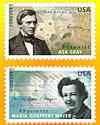
In 2011, four U.S. stamps were issued celebrating American scientists, including Asa Gray, one of America's earliest professional botanists. Three Nobel Prize winners were also shown on a background representing their accomplishment. Melvin Calvin, chemist, studied photosynthesis and also conducted pioneering research on the use of plants as an alternative energy source. Maria Goeppert Mayer developed a theoretical model of the structure of the atomic nucleus. She became the second woman to win a Nobel Prize in Physics. Severo Ochoa, biochemist, worked in protein synthesis, and was the first to synthesize ribonucleic acid (RNA).«
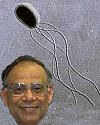
In 1980, the U.S. Supreme Court ruled that a patent could be issued for a genetically-engineered bacterium in the case of Diamond vs. Chakrabarty. In a landmark decision, the judges held five to four that the Patent Office should recognize “any” new and useful “manufacture” or “composition of matter,” and that the fact that micro-organisms are alive was without legal significance in the related patent law. Arguments were heard on 17 Mar 1980, when microbiologist, Ananda Chakrabarty appealed the rejection of his 1972 patent application for a human-made, genetically engineered bacterium capable of breaking down crude oil, which no naturally occurring bacteria could do. Patent No. 4,259,444 was eventually issued 31 Mar 1981.«[Image: the patented Burkholderia cepacia bacterium; inset: Chakrabarty]
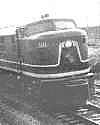
In 1949, the first gas turbine-electric locomotive in the U.S. was publicly demonstrated in, Erie, Pa. In 1946, a specific project to develop a gas turbine for railroad application got under way. After extensive stationary tests at Schenectady, the turbine was taken to Erie and was installed as the power plant of a locomotive. Track tests began 15 Nov 1948. The gas-turbine engine was originally designed for aircraft, in which it gives forward thrust from the reaction of its exhaust stream. In the locomotive, the power from the turbine was used to drive a generator supplying electric power to eight traction motors driving the locomotive wheels.
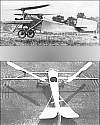
In 1922, Henry A. Berliner demonstrated the first helicopter prototype for representatives of the U.S. Bureau of Aeronautics in College Park, Maryland. Berliner made this first ever controlled horizontal helicopter flight in a war-surplus Nieuport 23 fighter with tilting tail rotor, and a short-span upper wing with 14-ft helicopter blades at the tips. It was powered with a Bentley 220 hp engine to the front which turned the two counter-rotating lifting rotors through a series of geared shafts. The two rotors could tilt slightly in opposite directions to control yaw. Two sets of five 36-in x 8-in louvers, located below each rotor, opened and closed differentially to provide roll control by presenting a flat surface, which reacted against the rotor downwash.
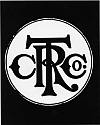
In 1911, the Computing-Tabulating-Recording Company (CTR) was incorporated, a predecessor of IBM (1924). Earlier, in 1890, Dr. Herman Hollerith had constructed an electromechanical machine using perforated cards for use in the U.S. census, and in 1896 he founded the Tabulating Machine Co. to construct sorting machines. In 1911, CTR was the result of the merger of the Tabulating Company (founded by Hollerith), the Computing Scale Company, and the International Time Recording Company)
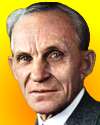
In 1903, Henry Ford was named in paperwork for incorporation as Vice President of the Ford Motor Company, with investor John S. Gray, as President that was filed by mail on this day. They were shareholders, as were ten more investors who signed. Those included Alexander Malcomson, a coal dealer, who had supplied financing since 20 Aug 1902 as Ford's partner in the fledgling car-making business of Ford & Malcomson, Co. The Ford Motor Company was formed to raise more capital than Ford or Malcomson had themselves. Gray was a wealthy candy manufacturer and banker, and Malcomson was his nephew. Michigan's Secretary of State received the documents the next day, 17 Jun 1903. A month after the Ford Motor Co. was legally incorporated, it sold its first Model A car on 23 Jul 1903.«
My Life and Work, by Henry Ford. - book suggestion.

In 1903, the Ford Motor Company incorporation paperwork was delivered by mail to Michigan's Secretary of State. The car manufacturer's incorporation was recorded. Henry Ford, had built a car several years earlier, while employed to maintain steam engines. On 4 Jun 1896, he road tested the gasoline-engine Quadricyle car he had built in a shed behind his house. By 16 Jun 1903, Ford had gathered 11 investors who signed, and filed by mail, articles of incorporation for the Ford Motor Company. Ford contributed his patents and knowledge. From $28,000 capital, his company grew and changed 20th century America. Production began in a converted wagon factory on Mack Avenue in Detroit, Michigan. On 20 Jul 1903, the Ford Motor Co. sold its first car, a Model A, to a Detroit physician.«

In 1903, Pepsi-Cola Co. registered the Pepsi-Cola trademark with the U.S. Patent Office. Pharmacies at the time were favorite gathering places. To increase business at his store's soda fountain, pharmacist Caleb D. Bradham created a soft drink. In the summer of 1898, he mixed carbonated water, sugar, vanilla, oils, pepsin, and kola nut extract. Customers at in his pharmacy in New Bern, N.C., liked the beverage and called it Brad's Drink. As its popularity grew, Bradham changed the name to Pepsi-Cola. The name emphasized the pepsin and kola nut extract it contained for their supposed health benefits. Pepsin, an enzyme, was thought to aid in digestion, and caffeine, an alkaloid found in kola nuts, was believed to bestow beneficial energy.

In 1893, Cracker Jack was invented by R.W. Rueckheim, a unique popcorn, peanuts, and molasses confection which he introduced at the World's Columbian Exposition, Chicago's First World Fair. The company he formed with his brother Louis as a partner was called F.W. Rueckheim and Brother. In 1896, Louis discovered the process for keeping the molasses-covered popcorn morsels from sticking together. This secret formula is still in use to this day. In 1912, “A Prize in Every Box” was introduced with toys inserted into every package. In 1918, Sailor Jack and his dog, Bingo, first appeared on packages. Sailor Jack was modeled after F.W. Rueckheim's young grandson, Robert.
more
Cracker Jack Toys, by Larry White. - book suggestion.

In 1884, the first gravity-powered American roller coaster that was commercially successful was put in operation at Coney Island, N.Y., the invention of La Marcus Thompson (patent No. 310,966). Passengers rode a train on undulating tracks over a wooden structure 600-ft long. The train started at a height of 50-ft on one end and ran downhill by gravity until its momentum died. Passengers then left the train and attendants pushed the car over a switch to a higher level. The passengers returned to their sideways facing seats and rode back to the original starting point. Admission on the Thompson Switchback Railway was 5 cents and he grossed an average of $600 / day. Within 4 yrs he had built about 50 more across the U.S. and in Europe.
In 1874, the Cavendish Laboratory was opened at the University of Cambridge, England. It was built as a teaching laboratory with a regular course of instruction - a new idea for the time. Until then, much of experimental physics was conducted as individual work in essentially private laboratories. Joule and Cavendish, for example, set up their facilities in their own home, at their own expense. An early exception was the laboratory at the University of Glasgow established in the 1840's by William Thompson (later Lord Kelvin). The first Cavendish Professor (1871-1879) was James Clerk-Maxwell, followed by Lord Rayleigh (1879-1884), who both much expanded knowledge of physics. The third Cavendish Professor was J.J. Thomson, discoverer of the electron.«*
In 1846, Prince Albert laid the first stone for the College of Chemistry. It was founded in Jul 1845 for the purpose of instruction in chemistry with a well-appointed laboratory. Although the first British public laboratory appears to have been opened by Thomas Thomson in Glasgow (1817), the College of Chemistry in London provided the first important step for providing students the means for the systematic study of chemistry at moderate expense. The laboratories were designed by August Wilhelm Hofman, who accepted a professorship in 1845 at the instigation of Prince Albert. It became the Royal College of Chemistry in 1853 when it was taken over by the government. Sir Edward Frankland followed Hofman in 1864. In 1907 it was incorporated in the Imperial College of Science and Technology.«

In 1657, the first pendulum clock was patented by its inventor, Christiaan Huygens. Although others may have worked in this field before him, Huygens made major advances in building a practical clock. He needed time accuracy for his astronomical measurements.




